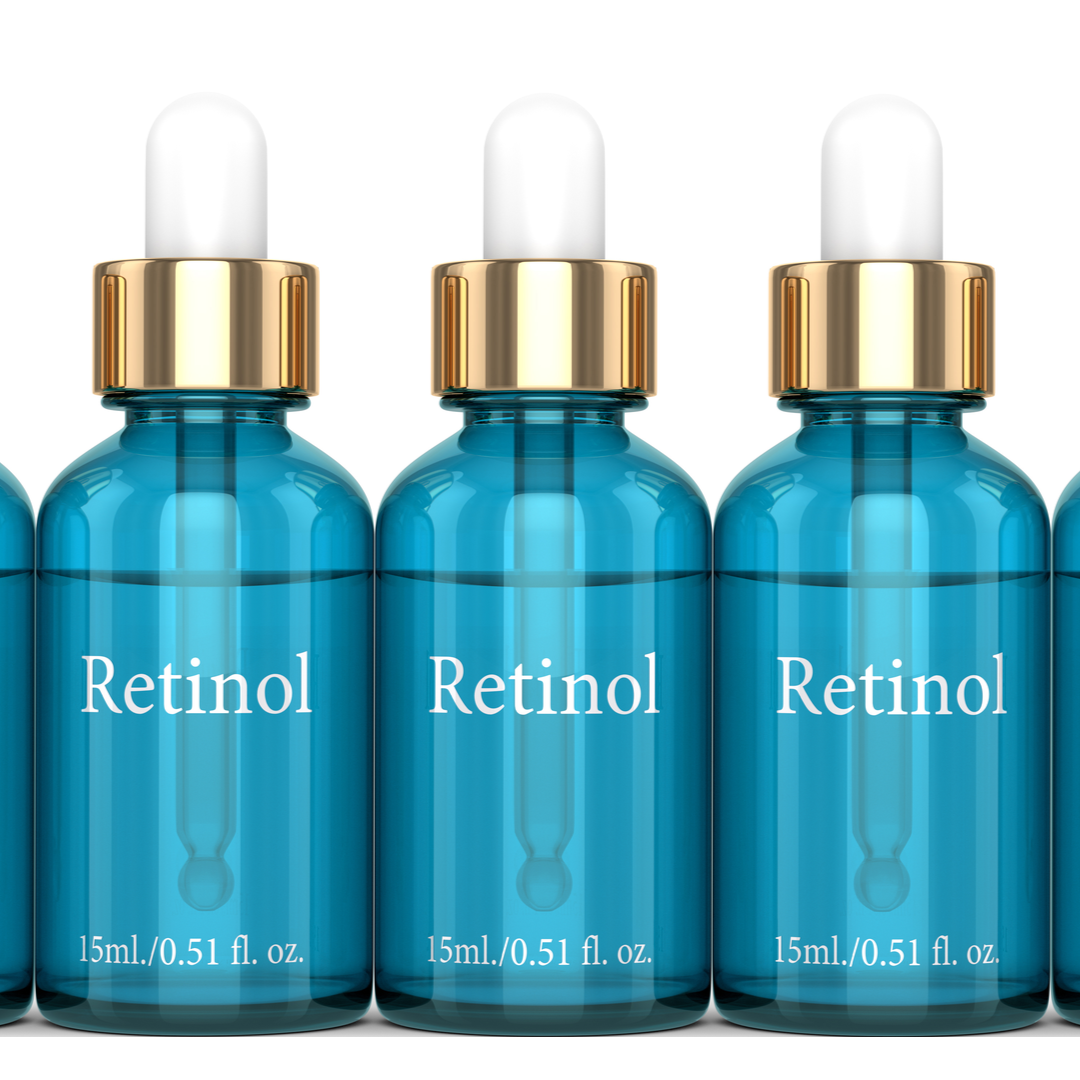
Are you a convert to vitamins for your skin yet?
My journey into skincare was a long, slow one because there is so much information (and unsupported marketing claims) out there. It was overwhelming…and a little scary. I could never find the information presented in a way that made sense to me.
However, food nutrition made sense to me, so that’s why I adopted this model for learning, researching, and organizing information. It doesn’t work for everyone, I get that. But maybe there are a few people with a brain like mine where this approach makes sense. A little nibble at a time so we can digest the information before we move to the next course.
We’ve already looked at vitamin C and vitamin B. Now we go back to the start of the alphabet and talk about topical vitamin A.
The Benefits of Vitamin A
Like the other vitamins we’ve been discussing, vitamin A helps:
- Reduce the look of fine lines and wrinkles by boosting collagen production.
- Reduce hyperpigmentation.
- Make skin look younger by helping to encouraging the growth of new blood vessels
- Promote youthful, brighter skin by sloughing off dead layers.
Vitamin A is a proven, beloved powerhouse for your skin with benefits that compound over time. It can turn back the hands of time. But read on, because it comes with some fine print.
What You Need To Know
The cosmetic and cosmeceutical industries toss a bunch of similar sounding words around which I am fairly convinced are supposed to confuse and confound consumers. Let’s try to make sense of it.
Retinoids refer to a group of vitamin A derivatives that generally provide the benefits noted above. Here are some of the familiar names in the family:
- retinol
- retinol esters
- Retin-A (trademarked brand name of tretinoin)
- tretinoin (generic version)
- retinoic acid esters
- retinaldehyde
In the interest of simplification, there are two general groupings we want to look at.
- Prescription versions (stronger, purer form of vitamin A or retinoic acid which requires a prescription, a dermatologist’s oversight, and some careful usage notes).
- Over-the-counter versions (non-prescription, weaker version of vitamin A with fewer side effects.)
Before I go diving into the difference, we need to have a quick discussion about CONVERSION.

Retinoic acid is the only form of vitamin A your skin can actually use to get all of the wonderful benefits. The prescription versions are pure retinoic acid which can be very harsh on the skin – which is why you need a dermatologist involved in dispensing it. A retinaldehyde requires a one-step conversion to become retinoic acid. This means a little less harsh and a little less effective. Retinol has a two-step conversion and retinol esters have a three-step conversion. You can use this chart to help decide what form of vitamin A works for you and your skin as you experiment with it.
Working Up To It
Pure retinoic acid can cause redness, peeling, dryness and discomfort. It must be used in conjunction with a sunscreen because it makes your skin more sun sensitive. When you use the pure version, you need to SLOWLY work up to frequency and concentration.
I started with a .025% compound and used it every other night. I did that for six months or so. When I ran out of the tube, my dermatologist and I agreed to increase the concentration to .05%. I used this every other night for a year. Finally, after 18 months, we leveled out at .1% concentration. I used this every other night for a year and then started increasing it slowly. All in all, it took me three years to get to the point that I was using it every night. Even with all that, I can still have days where my skin is irritated and dry. I skip using it until my skin has calmed down.
Retinols are on the market because they don’t require you to work up to using it and they don’t generally have the downsides associated with the prescription versions of vitamin A. You lose a little strength and benefit because of the conversion process but you gain in both price and comfort. Most people can use retinols immediately without an acclimation period.
If your skin is really sensitive, you might find retinols are still too strong for daily use for you. You can always use them less frequently or in a milder form (retinol esters). You don’t need to use it every day to get benefits. Just listen to what makes your skin happy. It sounds like a real pain, but it IS worth it if you take the time to figure out what works best for you. There is a reason that retinoic acid is the gold standard for anti-aging!
Top Contenders
- Tretinoin – pure retinoic acid that comes in a variety of strengths and requires a prescription. I use a good old generic version to get as much cost savings as possible. I can get this filled through my pharmacy.
- Curology – is an online retailer who sells formulations of prescription-strength skincare. It’s done on a subscription basis and they will work through the dermatologist requirements with you. You can mix formulations of tretinoin with other vitamins to create a skincare cocktail to meet your specific needs.
If you go to their website, you can get a free trial for one month and if you search, you may be able to find other coupon codes. Just remember you need more than 30 days to see results. - Ole Henriksen Goodnight Glow Retin-ALT Sleeping Creme – This is a lovely, lightweight moisturizing cream that has a plant-based retinol (thus the confusing name “Retin-ALT”) that has a two-step conversion retinol. I really like the texture of this and will use it on days when my skin is complaining too much to use tretinoin.
- Shiseido Benefiance WrinkleResist24 Pure Retinol Express Smoothing Eye Mask – These eye patches are a LONG time favorite of mine. I’ve used them for over a decade and they are fantastic. I like to use them before special occasions or as part of a “spa-day”. My only beef is with the marketing. I think the “pure” part of the product name is intended to distract you from the fact that it’s a retinol. It may be a pure retinol – but remember that’s NOT the same as pure retinoic acid. It’s actually good because the formula is non-irritating for around your eyes.
- Olay Regenerist Retinol24 Night Moisturizer – An affordable night cream that consistently receives high marks across different sites. I enjoy this more in the winter since it’s a thicker formulation.
Obviously my list isn’t exhaustive. It’s the short list of products I’ve tried and enjoyed. If you do a search on your favorite skincare site, you will find a TON of products with retinol or some vitamin A formulation in them. Just be a smart consumer and look at the ingredient list so you know how effective it is going to be and how strong or gentle it will be on your skin.
As with anything, patch test active ingredients, try samples and work with your skincare and healthcare professionals to make sure products are right for you.
Note: These are NOT affiliate links. I’ve included them for your convenience but you can find different products and prices and deals if you search once you’ve narrowed down your preferred formulation. If you have any great deals or recommendations, please leave them in the comments.
Do you use a vitamin A product now? If not, do you think you’ll try it now?